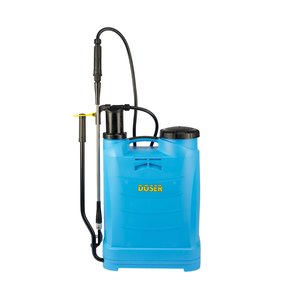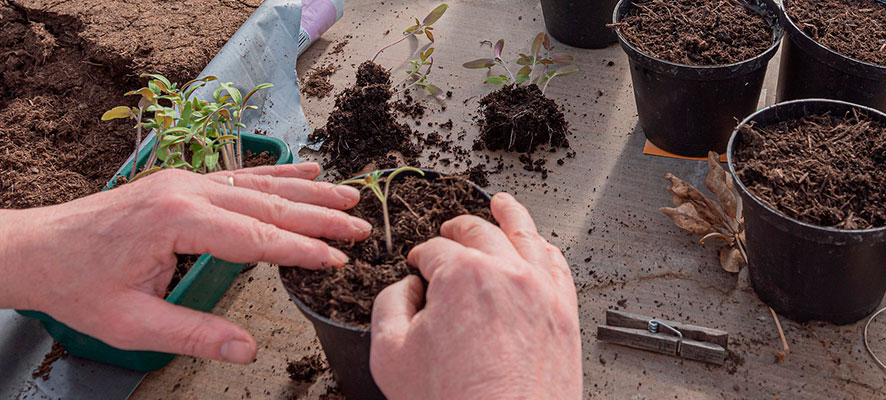
To think of tomatoes is to think of summer, right?
If you want to have some tasty tomatoes this summer, it is better that you start making a hole in your garden to plant this yummi fruit.
Unfortunately, there are few vegetables that are prone to more problems than tomatoes. The trick to growing tasty tomatoes is to choose the best varieties, take good care of the plants, and catch problems before they happen.
Today we give you some tips for its cultivation so that you can savor tomatoes this spring summer.
1. Respect the space between tomatoes
If you've decided to start tomatoes from seed, give the seedlings plenty of room to branch out.
This means reducing the seedlings to one strong plant for space or small pot. Cut the weakest and smallest seedlings in favor of the best grower. Overcrowded conditions inhibit their growth, stress them out and lead to disease later on.
When they start to get strong green leaves, transplant them into pots about 10 centimeters.
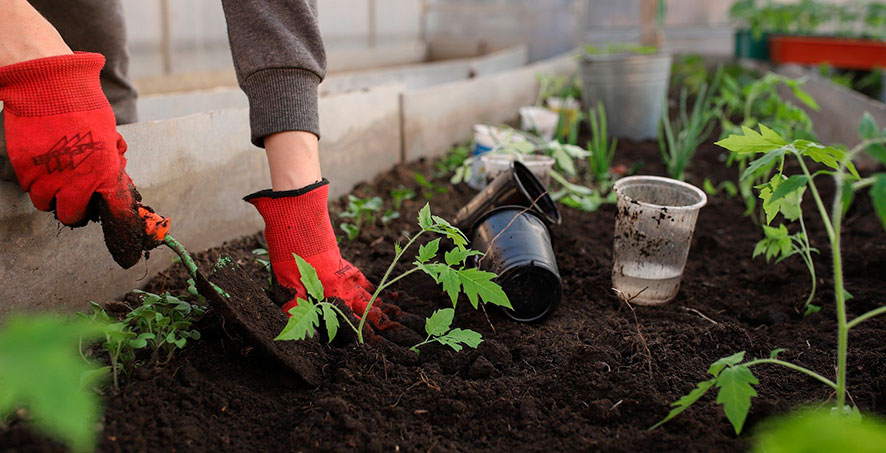
2. Ilumination is important
Tomato seedlings need strong, direct light. The days are short during the winter, so even placing them near a sunny window may not provide them with enough natural light. Unless you're growing them in a greenhouse, your best bet is to use some form of artificial plant lighting for 14 to 18 hours every day.
When you see that they are ready to plant them outside, choose the sunniest part of their garden as their location.
3. Preheat the soil in yourgarden
Tomatoes love heat. They won't really start to grow until both the soil and air temperatures remain warm. You can speed up the process in the ground by covering the planting area with black plastic a couple of weeks before planting in the garden. Those extra degrees of heat from the ground will translate to earlier tomatoes, so you won't have to wait until summer to start enjoying them.
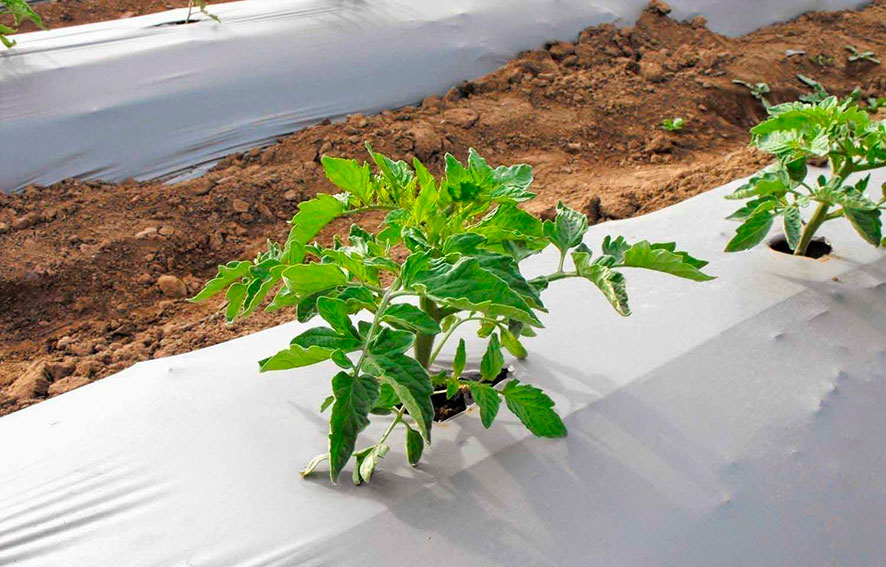
4. Bury the stems deep
Plant your tomato plants deeper than they come in the pot, up to the height of the top leaves. When planted this way, tomatoes can develop roots along their stems. And more roots make a stronger plant.
You can dig a deep hole or just dig a shallow trench and lay the plant on its side. It will quickly straighten out and grow towards the sun.
5. Remove the lower leaves
After your tomato plants are about 80cm tall, remove the leaves from the bottom foot of the stem. These are the oldest leaves and are usually the first leaves to develop fungal problems. As plants fill out, the lower leaves receive the least amount of sun and airflow. Because these leaves sit low to the ground, soilborne pathogens can easily splash onto them. Removing them helps prevent fungal diseases from taking hold. And in addition weekly spraying with compost tea is also very effective in preventing fungal diseases. At Matabi we have a wide variety of sprayers suitable for fungicides of natural origin.
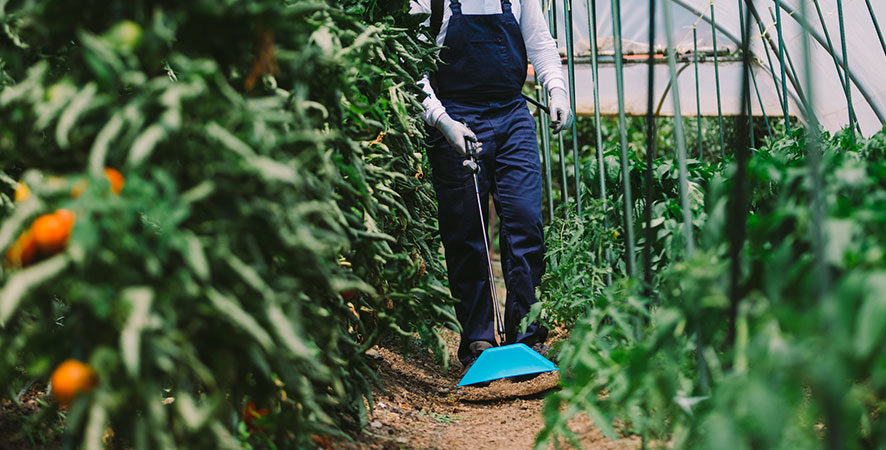
6. Water regularly
Water deeply and regularly as the fruit develops. Irregular watering, (missing a week and trying to make up for it), leads to blossom tip rot and cracking and splitting. The general rule of thumb is to make sure your plants get at least 0.2 liters of water per week, but during hot, dry spells they may need more. If your plants start to look wilted for most of the day, give them a drink.
After the fruit begins to ripen, you can decrease the watering. Lowering the water will convince the plant to concentrate its sugars, for better flavor. At Matabi we have the ideal dispenser - DOSER Evolution - so that all your tomato plants have the same homogeneous growth rate. In addition to a dispenser, it is also convertible into a sprayer!
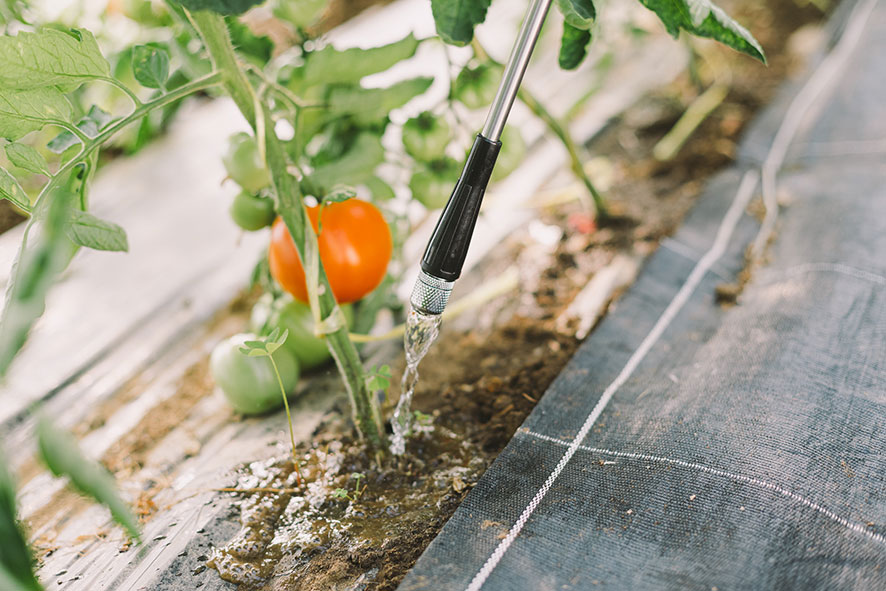
7. Harvest your tomatoes sooner
The ripening of tomatoes is practically at the mercy of the weather, but sometimes we can help them.
Cutting the tips of the main stems in early summer helps indeterminate tomatoes (those with continuously available fruit) begin flowering.
Indeterminate tomatoes like to grow tall before they start to bear fruit, so don't be alarmed if your tomato plants don't flower for the first month or two.
--
Source: The Spruce
Did you enjoy reading the article? Has it clarified any doubts for you? Give us your opinion and help us spread it on your social networks. We also invite you to follow us on Instagram.
